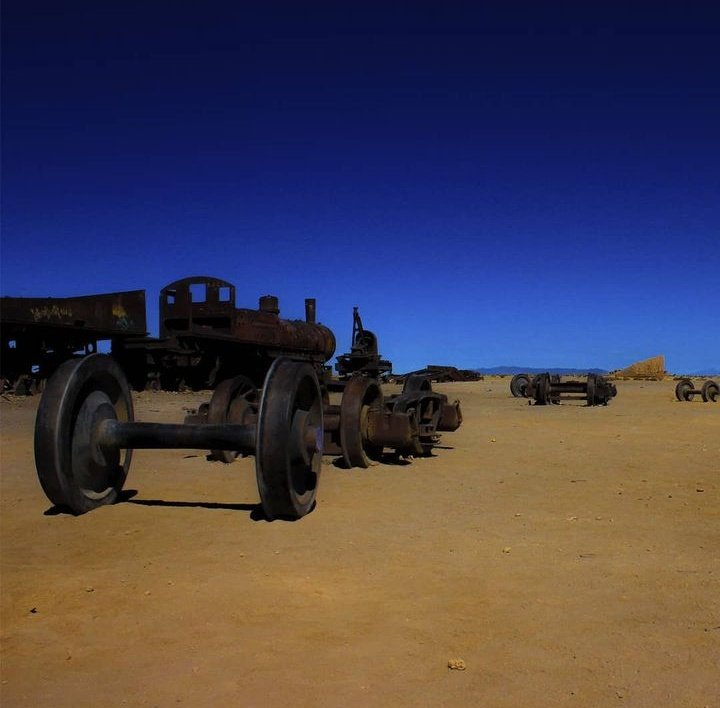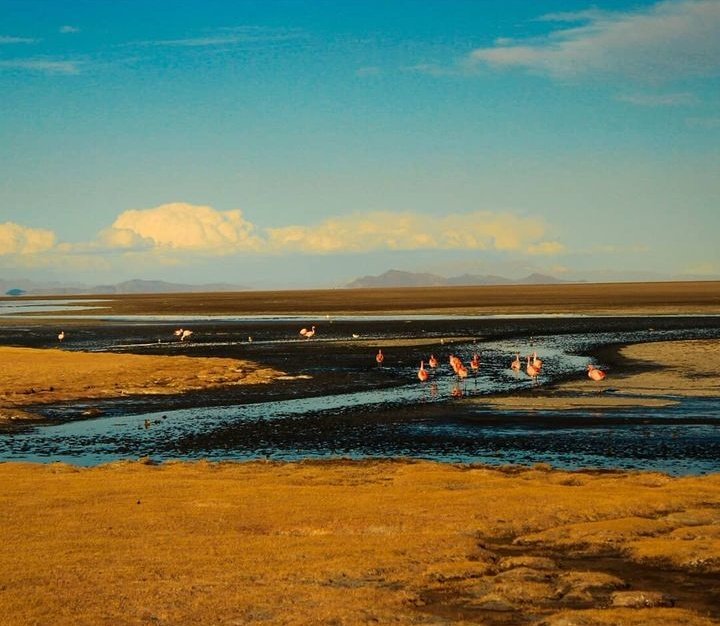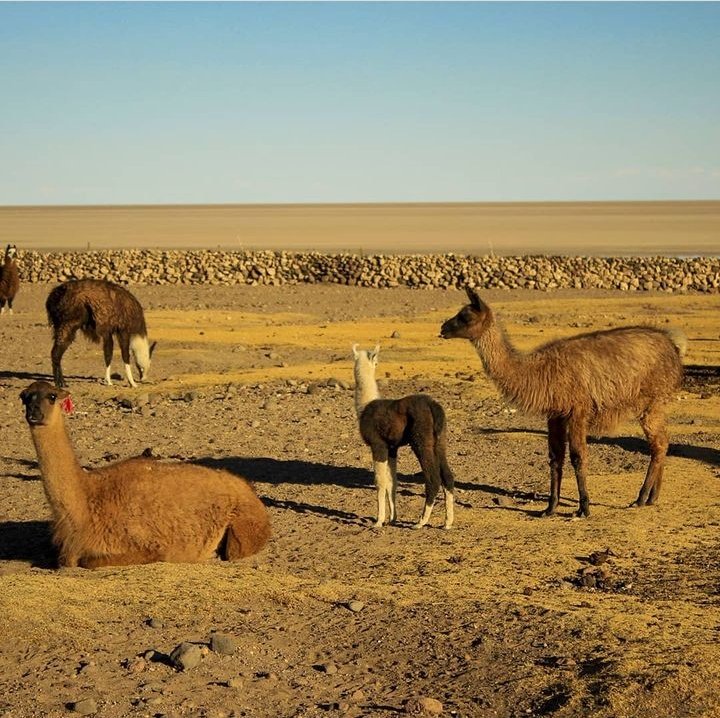ESP
Hola a todos espero se encuentren muy bien, estaba mirando en mis archivos y he encontrado unas fotografías que tomé en un viaje hace unos años a Bolivia especificamente a Uyuni, estuve alrededor de 4 días y tome un tur por el salar que es algo caracteristico de esta región, en este post les mostrare tres fotografías que no son muy comunes que los turistas tomen en este sitio porque sus ojos solo se están enfocando en el salar como tal.
El salar de Uyuni está ubicado en una zona desertica de la cordillera de los Andes esta región cuenta con dos estaciones una de mayo a octubre la cual es la epoca seca donde el salar esta seco y es muy parecido a un desierto y la otra de noviembre a abriel, en esta epoca las lluvias generan una capa de alrededor de 5 centimetros en el salar generando un efecto tipo espejo que lo hace una atracción turistica muy famosa en este tiempo.
La primera fotografía es del cementerio de trenes el cual está ubicado a 5 kilometros aproximadamente del pueblo de Uyuni, en este lugar se encuentra varios trenes abandonados los cuales eran utilizados hace varios años para el transporte de minerales de minas cercanas .
ENG
Hello everyone, I hope you are all doing well. I was looking through my files and I found some photos I took on a trip a few years ago to Bolivia, specifically to Uyuni. I spent around 4 days there and took a tour of the salt flats which is something characteristic of this region. In this post, I will show you three photos that are not very common for tourists to take in this site because their eyes are only focusing on the salt flats themselves.
The Uyuni salt flats are located in a desert area of the Andes mountain range. This region has two seasons: one from May to October, which is the dry season where the salt flats are dry and similar to a desert, and the other from November to April, during which the rains create a layer of around 5 centimeters on the salt flats, creating a mirror-like effect that makes it a very famous tourist attraction during this time.
The first photo is of the train cemetery, which is located approximately 5 kilometers from the town of Uyuni. In this place, there are several abandoned trains that were used several years ago for transporting minerals from nearby mines

Canon T3i
18-55mm
iso 100
f /16
La se gunda y tercera fotografia fueron tomadas en el volcan Tunupa el cual está ubicado al sur del salar, en la parte inferior del volcan se encuenrtran diferentes especies de animales entre ellas las llamas representativas de esta región de los Andes y los flamencos rosados los cuales toman ese color por el alimento de consumen.
The second and third photos were taken at the Tunupa volcano, which is located to the south of the salt flats. At the base of the volcano, there are different species of animals, including llamas, which are representative of this region of the Andes, and pink flamingos, which get their color from the food they consume.

Canon 3Ti
18-55 mm
iso 100
f/ 11

Canon T3i
18-55 mm
iso 100
f/ 5.6
Espero que esta información haya sido de su agrado, si alguna vez están en Bolivia no duden en pasar por el el salar de Uyuni no se van a arrepentir.
I hope this information has been to your liking. If you ever find yourself in Bolivia, don't hesitate to visit the Uyuni salt flats - you won't regret it!

Gracias a todos por tomarse el tiempo de leer mi post, espero les haya gustado.
© Copyright 2023 Alejandro Duque Muñoz (NaturalBornK). All rights reserved. All photographs and text included here are the property of Alejandro Duque Muñoz (NaturalBornK)
